Why Kids Love Dinosaurs!
By Christopher O’Brien
Dinosaurs, those exotic reptilian creatures that ruled the earth (and drive-in theaters) for 300 million years, continue to mesmerize generations of earthbound kids. And count me among them for I was hooked tooth and claw from the beginning. While in third-grade I remember reading Roy Chapman Andrews’ account of his harrowing fossil-hunting trip to the Flaming Cliffs of Mongolia in the 1920s, where he discovered protoceratops nests and the first unearthed dinosaur eggs. And I also remember watching Ray Harryhausen’s animated dino movies at the Saturday afternoon matinee, including: The Animal World, One Million Years B.C. and The Valley of Gwang. And later, I devoured Turok, Son of Stone comics featuring a Native-American duo wandering in a lost valley of dinosaurs and “demons.” As an eight-year old in 1965, the Danish low-budget sci-fi classic Reptilicus was probably my first exposure to the concept that a dinosaur could exist in modern times. As a direct result of my early interest in sauropods, I’ve been scanning the news ever since for emerging scientific discoveries and new archaeological sites of these extinct reptoids. And I’ve also become an avid “bone hunter”/fossil collector. Like many of you, I love the thrill of discovery and for me fossil hunting is both a science and a sublime meditation.
Hunting the Upper Jurrasic/Morrison Formation (in that unique slice on the southern side of Utah’s San Rafael Swell) is a risky adventure for the truly discriminating collector. This region is near a remote section of Canyonlands National Monument (where strange dinosaurian creatures were reported October, 2011), and where the world’s only gem-quality vertebra (dinosaur) fossils are to be found. Rarer than meteorites, these gorgeous jasper agate works of art are held as awesome specimens in private collections, but most often seen as polished out pieces innocently adorning rings, beads and bolo ties. And if you decide to go “bone hunting” explorers, pack your water and snake bite kits, for this is an unforgiving, otherworldly landscape. It’s questionably legal, so be forewarned.
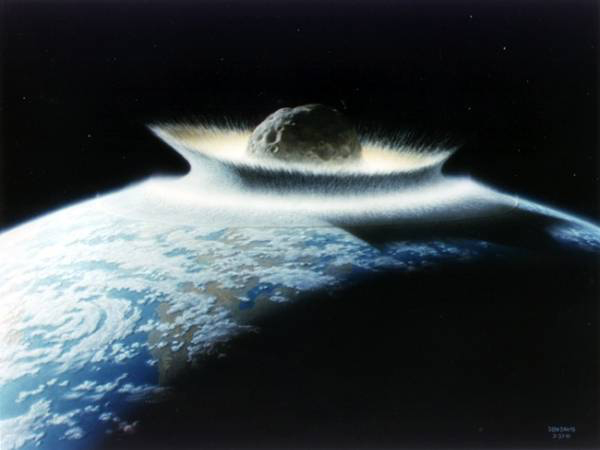
Chickxulub and Scrubbed?
So, what did happen to the dinosaurs? If you are a creationist, they only disappeared a few thousand years ago because they weren’t invited aboard Noah’s ark. The more rational view is that they became extinct around 65 millions of years ago and modern science has ascertained the most likely reason for their demise was the cataclysmic Chickxulub asteroid.
In 1980, Nobel-prize winner physicist Luis Alverez and his geologist son Walter devised a theory that has become widely accepted by mainstream academia: dinosaurs and most mege-fauna were rendered extinct by the Chickxulub asteroid impact in the southwestern Gulf of Mexico at the end of the Cretaceous period, about 65.5 million years ago (+-30,000 years). We now know that a massive six-mile wide object slammed into the planet at this location and the resulting event created a dust and smoke cloud that suffocated the entire planet’s dry land eco-system and killed off most animal species. By analyzing geologic strata data, scientists have identified the thin layer of iridium that was deposited worldwide during this time-period. Iridium is rare on earth but abundant in asteroids, and this evidence suggests that an asteroid impact created hellish conditions that circled around the surface of the planet for months—possibly years. Around 50% of all animal species on the planet — including all remaining species of dinosaurs, pterosaurs (flying species), large marine species like the plesiosaurs and most other small land and sea dwelling sauroid types quickly died out.
Evolutionary theory suggests that smaller proto-mammals were somehow able to fill the ecological niche and life continued. Bio-diversity again reigned supreme and the earth recovered from the catastrophic ending of the reigning Mesozoic era with mammals the predominate animal species. We know that mammals flourished after Chickxulub, but is it possible that some species of dinosaurs somehow managed to survive as well? Recent scientific findings suggest a few dinosaur species are known to have survived up to 700,000 years after the epic impact. Some of these types may have evolved into today’s birds, but what about persistent sightings and apparent trace evidence of larger sauropods? The search must begin in pre-historic times.
Here Be Dragons
Since ancient times, stories of dinosaurs, dragons and other large reptoidal forms have been documented in the myths and legends of humans. Ancient dinosaurian descriptions from the East are found in Sumer, Babylon, Egypt and other ancient Near-Eastern cultures and in Far-Eastern Asian countries—most notably: China.
When and where the dragon archetype emerged in Chinese Culture is lost in prehistory. Dragon (or reptilian) references have been found as far back as 4700 BC, as depicted on jewelry from the pre-Chinese Hongshan culture and even earlier at Neolithic Xinglongwa cultural sites. In Asia, dragons are thought to be positive creatures, often depicted as ruling bodies of water, streams and rivers and there are over 100 dragon names found in classic Chinese texts. Ancient Chinese legends mention that the legendary first emperor, Huangdi had been immortalized into a emblematic dragon form and that he ascended into the heavens. This may be where the concept of the Chinese emperor’s Dragon throne originated and also may be why some Chinese have referred to themselves as the descendants of the dragon.
As you head west from China, we see a gradual blending of the dragon form with a more snake-like form of the naga. These are sacred snake-like creatures in Tibet, and like the Chinese dragons, they rule over bodies of water and often are said to live underground where they sometimes guard treasure. There are many other mythical reptilian forms found throughout Southeast Asia, but they are predominantly thought of in a positive light.
Head further west into the Mesopotamian cultures of the ancient world, and we find our first negative references of dragons in myths featuring heroic dragon slayers. There are several creation accounts that feature this type of conflict in the near east–the most famous being the war between Marduk and Tiamat. Rivaling any Egyptian soap-opera, this epic Babylonian story probably influenced many other subsequent ancient cultural versions…
Cut to the final act: After the murder of her husband by Marduk, Tiamat spawned an army of dragons, horned serpents and chimaeric humans creatures and attacked Marduk, but for naught. After the conflict in which Tiamat was slain and mutilated, Marduk cut her body into pieces. (Kind of a reverse Isis and Osirus story, of sorts.) There are many other amazing myths and legends that hint at reptoidal creatures throughout the ancient world that are too numerous to mention in this article.
While we are on the subject of dragons, they are found in Greek mythology as well as in documented historical accounts from ancient to medieval times. In his memoirs, Alexander the Great mentioned a dragon over 100 feet long that his soldiers witnessed while campaigning in India. The hissing creature was described as living in a cave and was not friendly. Begged by nearby villagers not to harm it, Alexander obliged. He also wrote that his soldiers, while on campaign, were so terrified of [all] the dragons encountered that they left them alone and didn’t attempt to arouse their anger.
In the book The Life Of Apollonius Of Tyana, written in the first century, Greek historian Flavius Philostratus also mentioned dragons living throughout India:
“The whole of India is girt with dragons of enormous size; for not only the marshes are full of them, but the mountains as well, and there is not a single ridge without one. Now the marsh kind are sluggish in their habits and are thirty cubits long, and they have no crest standing up on their heads, but in this respect resemble the she-dragons. Their backs however are very black, with fewer scales on them than the other kinds; and Homer has described them with deeper insight than have most poets, for he says that the dragon that lived hard by the spring in Aulis had a tawny back; but other poets declare that the congener of this one in the grove of Nemea also had a crest, a feature which we could not verify in regard to the marsh dragons.
And the dragons along the foothills and the mountain crests make their way into the plains after their quarry, and prey upon all the creatures in the marshes; for indeed they reach an extreme length, and move faster than the swiftest rivers, so that nothing escapes them. These actually have a crest, of moderate extent and height when they are young; but as they reach their full size, it grows with them and extends to a considerable height, at which time also they turn red and get serrated backs. This kind also have beards, and lift their necks on high, while their scales glitter like silver; and the pupils of their eyes consist of a fiery stone, and they say that this has an uncanny power for many secret purposes…”
Slaying the Dragons
As we examine the myths and legends of ancient Greeks and Hittites we find other references that tell of humans and gods fighting dragons and other large reptile forms. The myths include: Perseus and Andromeda, Bellerphone and the Chimaera and the Hittite storm god Tarhun and the dragon Illuyankas. A distillation of these myths can be found much later in the famous medieval story of St. George slaying the Dragon. This allegedly occurred near the Libyan town Silene. George is said to have saved the princess daughter of Selinus, who was about to be offered as a sacrificial offering to a dragon that had become dissatisfied with sacrificial children offered by the townspeople. The epic battle has been immortalized down through the centuries and may be a more recent version of other ancient legends.
Throughout the ancient and medieval world there is tantalizing evidence of dragon and dinosaurian beasts influencing art and culture. Roman mosaics features dragon motifs, Viking ships were often adorned with dragon headed bows—said to scare away sea-monsters. Reptilian forms depicted in the art and myths of ancient peoples are found around the globe. But myths and legends are one thng, what about actual documentation?
In 1572 AD an Italian peasant claimed to have killed a dragon that had been preying upon his cattle. The dead creature was reportedly examined by a famous naturalist of that era, Ulysses Aldrovandus on May 13, 1572. He obtained the carcass, thoroughly documented the event, and had the dragon-looking form mounted on display in the local museum. The medieval French town of Nerloc was supposedly named after a dragon slayer who dispatched a dragon-like beast “larger than an ox that sported long, sharp horns on its head.”
In the forward of famed cryptologist Dr. Karl Shuker’s 1995 book Dragons: A Natural History, he wrote:
“In the world of fantastic animals, the dragon is unique. No other imaginary creature has appeared in such a rich variety of forms. It is as though there was once a whole family of different dragon species that really existed, before they mysteriously became extinct. Indeed, as recently as the seventeenth century, scholars wrote of dragons as though they were scientific fact, their anatomy and natural history being recorded in painstaking detail. The naturalist Edward Topsell, for instance, writing in 1608, considered them to be reptilian and closely related to serpents: “There are divers sorts of Dragons, distinguished partly by their Countries, partly by their quantity and magnitude, and partly by the different form of their external parties.” Unlike Shakespeare, who spoke of ‘the dragon more feared than seen,’ Topsell was convinced that [dragons] had been observed by many people.”
Myths, legends and stories are one thing, but have huge reptilian creatures been encountered in modern times? The answer predictably is yes. Guan Mulin from the town of Fuzhou in East China’s Jiangxi Province claims he photographed a flying dragon this past January 2012. “I [was driving] home and suddenly I noticed that all the people on the street [were] staring at the sky. I parked the car [to] check what’s going on. In the sky I saw… two dragons, [that were] flying among the clouds,” said Guan. The unusual sighting lasted several minutes then, the creatures flew away. Obviously we cannot take this claim and his alleged photograph at face value in this era of photoshopped hoaxes, but Guan’s story echoes countless sightings of saurian creatures over the past 300 years. Let’s first look at some of the earth-bound types:
The Beast in Madidi
In 1883, Scientific American writer William A. E. Axon published an article titled “A Bolivian Saurian” that documented an unknown creature shot, preserved and documented by Brazilian and Bolivian government authorities. The La Paz Department in northwestern Bolivia and the Beni swamps of Madre de Dios have long fostered stories in remote the native populations of what appear to be dinosaur encounters, but this claim was exceptional, for it produced physical evidence:
“The Brazilian Minister at La Paz, Bolivia, had remitted to the Minister of Foreign Affairs in Rio photographs of drawings of an extraordinary saurian killed on the Beni after receiving thirty-six [musket] balls. By order of the President of Bolivia the dried body, which had been preserved in Asuncion, was sent to La Paz.”
According to Axon article, the dried carcass measured 39 feet long and featured plate-like armor on its large belly and legs, which were short and adorned with nasty-looking claws. Evidently, the beast was formidable for “…the back [is] protected by a still thicker and double cuirass, starting from behind the ears of the anterior head, and continuing to the tail.” It had a long neck and flattened canine like heads. That’s right, the monster preserved in the town of Asuncion was quite the sensation for it featured two heads. Perhaps this discovery could help explain ancient cultural belief in the mythical “hydra,” “medusa” or other multi-headed reptilian forms found in many cultures myths and legends?
In 1907 an engineer in the British Army sent to survey and mark the border between Brazil and Peru, experienced a dino sighting. Famed explorer/adventurer Percy Fawcett, while a British Army engineer reported seeing a diplodocus in the Beni Swamp. Fawcett also investigated reports of dinosaur-like mega-fauna that had been reported in the Madidi River swamps and noted in his 1953 book Exploration Fawcett,
“[I]n the forests of the Madidi some mysterious and enormous beast has frequently been disturbed in the swamps–possibly a primeval monster like those reported in other parts of the continent. Certainly tracks have been found belonging to no known animal–huge tracks, far greater than could have been made by any species we know.”
Elsewhere, in Chile, crypto-dinos have also been reported through the intervening years including several reports as recently as 2004. In his excellent journal of the unexplained, Inexplicata, Scott Corrales reported that the Northern Chilean Iquique Star covered alleged sightings in their August 4, 2004 edition:
“Strange creatures described as ‘dinosaur-like’ and standing 2 meters (6 feet, 6 inches) tall have been seen in recent weeks in Pampa Acha, a small town 17 kilometers (10 miles) from the city of Arica in northern Chile… According to the driver’s description, the figures were grey and hairless. The second one, which crossed a few minutes later, was clearly seen by Riquelme, Hernan Cuevas and his 12-year-old daughter, Tania. They estimated the creatures’ height at 2 meters (6 feet, 6 inches)…The ‘two strange creatures, described as small dinosaurs and with a physical appearance similar to that of a kangaroo, were reported by the occupants of a Terrano pickup truck between Iquique and Arica on Thursday night,’ July 30, 2004….The vehicle’s driver, Dario Riquelme, was traveling in the company of (Chilean) Army official Hernan Cuevas, his wife and two young children…
“A new report involving the sighting of strange animals in the Pampa Acha sector was made known” Monday, August 2, 2004, “and coincides almost exactly with the one described Thursday by driver Dario Riquelme.”
Dark Continent Denizens
Whether modern science like it or not, dinosaur-like creatures are being reported worldwide today and perhaps some of the most intriguing accounts are found in the remote swamps in the Likoula region of the Congo, in west-central Africa. Natives in the region –for hundreds of years– have encountered the water-loving mokele-mbembe, a local Lingala term for “one who stops the flow of rivers.” Described by witnesses to be sauropod-like with a small head atop a long slender neck, like its Amazonian cousin, it sports a long whip-like tail, thick tapered body with thick legs that leave distinctive footprints. It leaves trace evidence that has allegedly reported for hundreds of years. Wider West-African cultural legends of this beast have also morphed into paranormal versions that are reminiscent of “Nessie,” Scotland’s Loch Ness Monster, but for generations, the region has consistently produced descriptive sighting reports by natives, explorers, missionaries and government officials living in this timeless region unchanged for millions of years. And these sighting claims continue in the modern age.
While crocodile hunting in the area in the late 1970s, Roy Mackal, a University of Chicago biologist, heard mokele-mbebe stories and was intrigued by a documented chain of claims that went back to French missionary accounts of finding “huge, plate-shaped tracks” in 1776. Mackal was impressed enough to mount two expeditions to the area in 1980 & 1981. A possible sighting event on a river occurred during the second expedition, as noted in Jerome Clark’s 1993 book, Unexplained and the two expeditions are described in Mackal’s 1987 book, A Living Dinosaur.
Predictably, Hollywood has also taken notice of mokele-mbembe and other fabled African crypto-dinos – referred to by various West-African tribes as: “Nsanga,” “Jago-nini,” “Amali,” “Coye ya menia,” and Emela-ntouka,” among others. Since 2006, National Geographic Channel has mounted two expeditions to the region; History Channel’s MonsterQuest and the Sy-Fy Channel show Destination Truth have also ventured into the forbidding Congo swamps in search of these elusive modern dinosaurs– all with limited, if any conclusive results. Several intriguing photographs have been taken over the years, but no hard evidence for these elusive beasts’ existence has been produced and the jury of science is still out. Like bigfoot, mokele-mbembe (and his various African cousins) continue to remain an unsolved cryptozoological mystery.
More Rumbles From the Jungles
Cameroon also has a reputation for harboring undiscovered mega-fauna that certainly seem saurian in their description. Although legends and stories have become entrenched in the local native societies, it wasn’t until the late-nineteenth & early twentieth-century that the western explorers to the region first heard tales and saw evidence of these creatures existence. In 1913 the German government financed the Von Stein expedition to explore and map the Cameroon and Captain Von Stein later wrote of an animal larger than a hippo and almost elephant-sized with a long flexible neck and tail that was said to have created a massive trail through the jungle that the expedition encountered.
There is an even earlier reference in the 1927 book Trader Horn: A Young Man’s Astounding Adventures in 19th-Century Equatorial Africa written by colorful ivory trader Alfred “Trader” Horn:
“Aye, and behind the Cameroons there’s things living we know nothing about. I could ‘a’ made books about many things. The Jago-Nini they say is still in the swamps and rivers. Giant diver it means. Comes out of the water and devours people. Old men’ll tell you what their grandfathers saw, but they still believe it’s there. Same as the Amali I’ve always taken it to be. I’ve seen the Amali’s footprint. About the size of a good frying pan in circumference and three claws instead o’ five.”
In 1932 famed cryptozoologist/biologist Ivan T. Sanderson and a companion claimed to have encountered ear-shattering roars and bellows as they headed by boat down the Mainyu River in Western Cameroon. As they passed by a series of cliffs, the loud calls sounded like huge animals were savagely fighting inside one of the many caves carved into the high riverbank. Sanderson wrote:
“[Then] came another gargantuan gurgling roar and something enormous rose out of the water, turned it to sherry-colored foam and then, again roaring, plunged below. This ‘thing’ was shiny black and was the head of something, shaped like a seal but flattened from above to below. It was about the size of a full-grown hippopotamus-this head, I mean.”
Up river from the site, Sanderson and his party later found huge unidentified tracks that could not have come from river-dwelling hippopotami the only animal large enough to create the tracks. According to local natives, hippos were no longer found in the area as they had been killed or forced out by the “m’kuoo m’bemboo[s],” (as phonetically spelled by Sanderson).
Interest in the Cameroon crypto-dinos has endured down through the decades: in 2009 the History Channel sent the crew of the popular TV program MonsterQuest to the Cameroon-Congo border area where recent sightings have been reported. They interviewed eye-witnesses who claimed encounters with real-life sauropod-like dinosaurs, and explorer William Gibbons,who helped investigate the cases found one witness who said we was able to reproduce the distinctive call of the beast that he and others had reported. Gibbons surmises that the animal has a bullfrog-like air sac that produces the loud resonating call that is perfect for ending reality-show TV segments and scaring the natives for generations.
Lost World in the Amazon
The Amazon Basin is one of the planet’s most remote and inaccessible regions. Covering three million square miles, this largely unexplored area was the setting for Sir Arthur Conan Doyle’s 1912 fictional novel The Lost World and if living dinosaurs still exist, this would be one logical place they could exist without detection.
One interesting account from the Basin was featured in the New York Herald in early 1911 and featured an encounter with a giant reptilian beast in a remote Peruvian valley in 1907. Two German explorers, Franz Schmidt and Rudoph Pfleng, accompanied a native guides and porters, happened upon a huge swath of crushed vegetation and observed the huge tracks of an unknown animal. The tracks seemed several days old. They established camp nearby and the following day set out to explore the area. While searching along a riverbank, they found more tracks, but these appeared alarmingly fresh. Schmidt’s Herald account of what happened next is highly sensational, if true:
“[A] head appeared over bushes 10 feet tall. It was about the size of a beer keg and was shaped like that of a tapir, as if the snout was used for pulling things or taking hold of them. The eyes were small and dull and set in like those of an alligator. Despite the half dried mud we could see that the neck, which was very snakelike, only thicker in proportion, was rough knotted like an alligator’s side rather than his back. Evidently the animal saw nothing odd in us, if he noticed us, and advanced till he was no more than 150 feet away. We could see part of the body, which I should judge to have been eight or nine feet thick at the shoulders, if that word may be used, since there were no fore legs, only some great heavy clawed flippers. The surface was like that of the neck….
“As far as I was concerned, I would have waited a little longer, but Pfleng threw up his rifle and let drive at the head. I am sure that he struck between the eyes and that the bullet must have struck something bony, horny or very tough, for it cut twigs from a tree higher up and further on after it glanced. I shot as Pfleng shot again and aimed for the base of the neck.
“The animal had remained perfectly still till now. It dropped its nose to the spot at which I had aimed and seemed to bite at it, but there was not blood or any sign of real hurt. As quickly as we could fire we pumped seven shots into it, and I believe all struck. They seemed to annoy the creature but not to work any injury. Suddenly it plunged forward in a silly clumsy fashion. The Indians nearly upset the dugout getting away, and both Pfleng and I missed the sight as it entered the water. I was very anxious to see its hind legs, if it had any. I looked again only in time to see the last of it leave the land -a heavy blunt tail with rough horny lumps. The head was visible still, though the body was hidden by the splash. From the instant’s opportunity I should say that the creature was 35 feet long, with at least 12 of this devoted to head and neck…
“As the Indians paddled frantically away I put a bullet through the poor thing to let it out of its misery. We had not gone a hundred yards before Pfleng called to me and pointed to the right. Above the water an eighth of a mile away appeared the head and neck of the monster. It must have dived and gone right under us. After a few seconds’ gaze it began to swim toward us, and as our bullets seemed to have no effect we took flight in earnest. Losing sight of it behind an island, we did not pick it up again and were just as well pleased.”
The Dinosaurs of Dilio Island
West New Britain is an extremely remote, sparsely populated province of Papua New Guinea and stories have emerged from native populations that mention huge sauropods that live along the coastal areas of unpopulated Dililo Island. In 2008 explorer Brian Irwin collected stories that mention sightings of this great creature had taken place in 2006 and his account was published in forteanzoology.blogspot. com.
“The creature was seen on the south, rocky side of Dililo Island from a distance of about 30 to 40 meters, moving in the water parallel to the coast along a reef. It was described as having a long neck and a long tail. It was around 20 meters long and about two meters around. The head was “like a dinosaur” with an “oval-like face” and the skin of the animal was “like a crocodile”, khaki green in color. Dermal frills (indicating the animal was a male) could be seen on the creature’s back, extending to the back of the head. No horn was seen on the animal, but something was observed protruding from the back of the creature’s head. The neck of the reptile was almost horizontal for the duration of the sighting. Because of the distance of the sighting, no details of the creature’s eyes or mouth could be determined and no sound was heard from it. The animal was observed to have legs, with the tops of the legs being clearly visible above the water. The duration of the sighting was about 30 seconds, until the creature sank into the water and out of sight.”
Sauropod dinosaurs are not the only possible type of living dinosaur reported in New Guinea. The famous flying “Ropen” have been reported for years and have been the subject of several recent high-profile television programs on National Geographic, Discovery and History Channels. Thought to be “grave robbers,” these giant flying reptiles are reminiscent of pterosaurs and according to several reports they are self-illuminated at night and have a bioluminescent glow!
Flying pterosaur-type dinosaurs have been observed worldwide and are probably the most often reported type of dinosaur sighting. Along with dozens of lake monster reports, unfortunately, there are far too many reports of these creatures to cover in this brief article.
Mini T-Rex and the Colorado’s River Dinos
While in Utah October 2011, I was surprised to learn of two separate sightings of small dinosaurs in Canyonlands National Monument. Both claims came from a remote part of the park and were related to several residents of Moab, UT. For years locals (and the occasional visitor) have mentioned small fast, three to 4 foot tall dinosaurs that resemble “miniature T-Rexs.” Newspaper and television news accounts of these creature sightings have been published in several Four-Corner area publications and aired on local news broadcasts–including this 2002 report on KSL-TV News in Cortez, Colorado.
“’It was a Jurassic Park flashback. I mean I was — I couldn’t believe it,’ says Shannon Ystesund. Ystesund and a girlfriend were driving down this road the night of July 5. She says a creature ran in front of the headlights, a very big lizard, nearly vertical, running on its hind legs. ’We were, you know, freaked out. Immediately we thought it was some kind of dinosaur or a huge lizard. So we came home,” she says. ’They just walked in and they were real excited and they said, ‘we just saw a little dinosaur run across the road,'” says Ystesund’s husband, Keith. ’Looked like the little dinosaurs in Jurassic Park that surrounded everybody in the tall grass fields,” says Shannon.
“This lady gives only her first name, Bea, because she’s been reluctant to go public with her story. ’Yes, I have, because people think you’re nuts,” Bea says. “Like a miniature dinosaur, you know. That would be as close as I can come to describing it. And I’ve never seen anything like it.’ “Independent researcher Nick Sucik says he’s collected eight such stories in the Four Corners area.”
According to New Mexico cryptozoologist/river guide J.C. Johnson, and MN private investigator Nick Sucik have investigated reports of these small, fast dinosaurs that are surprisingly widespread around the San Juan River Basin and the Northeastern part of Lake Powell. The Lake Powell and San Juan reports have given rise to the nickname, “river dinos,” and there are even reports of the dinos moving in groups of up to a dozen animals. Johnson has also has investigated dino sighting reports on the Navajo Indian Reservation and has witnessed “giant snakes” in the San Juan River. It seems the magical Four-corners’ region contains mysteries that refuse to go away.
Further west, in the Grand Canyon, there are petroglyphs that look amazingly like sauropods and suggest that ancient man may have witnessed these rare and elusive creatures. Could these animals have somehow survived in the high, dry Colorado Plateau region for millions of years? Scientists scoff at the notion, but reports continue to be logged by surprised witnesses as they observe these “mini T-Rexs” scurrying across roads and along the riverbanks of the Four-Corners region and in the remote jungles of the world.

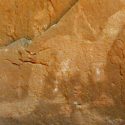


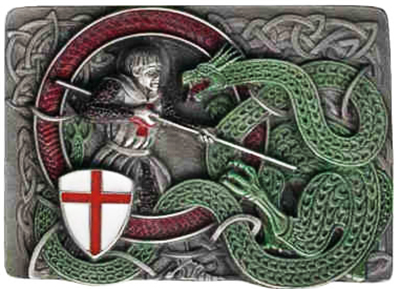
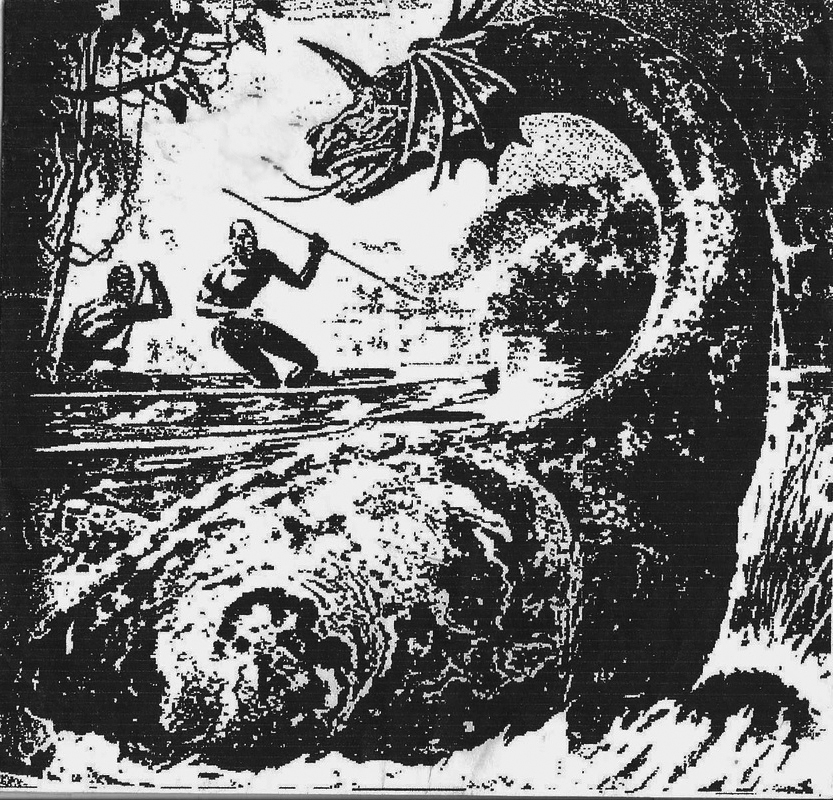
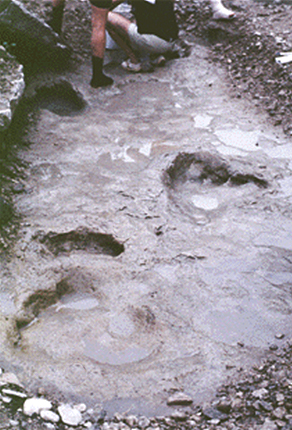
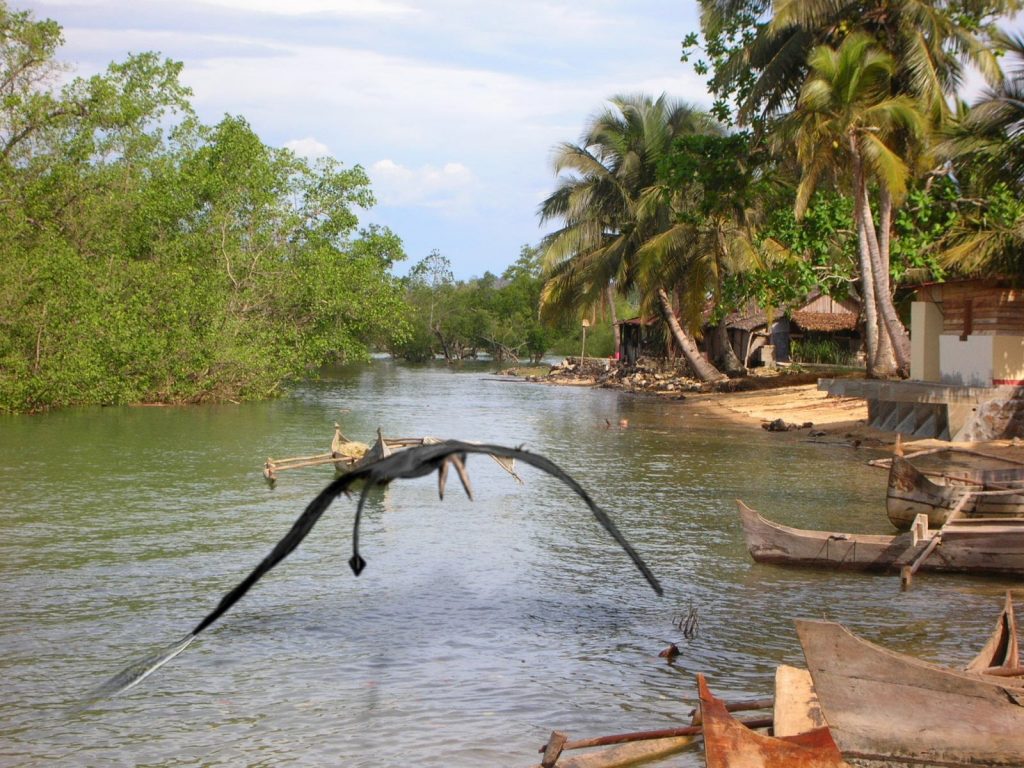
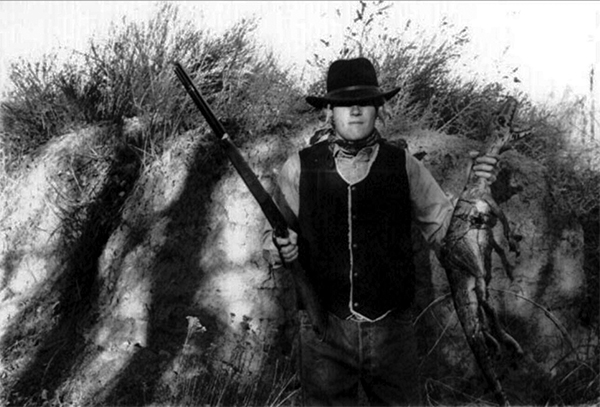
[…] and having a second mouth on their bellies (the better to eat you with my dear… ) As for Modern Dinosaurs? one only has to look at the pages of folklore and myth from around the world. Clearly some kind of […]
So very interesting and I do believe that people are seeing something. What a fascinating world we live in. I myself once witnessed an unusual creature, so I do believe cryptids exist. Well done Chris. It really expands the mind.
All I can say is that no one has the right to simply call all such reports lies or fabrications. This is worthy of further investigation, hopefully by someone with deep pockets and a professional approach.
Honestly, dinosaurs have always been a great wonder to this world and no one know where has proven them to NOT have been here before we were so why not believe in something harmless.